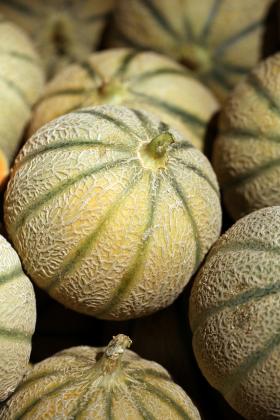
CARROT - FKALLEE 2, organic seeds, heirloom
Daucus carota
Out of stock Medium-late variety. Vegetation period is 115–120 days. Root crop is cylinder shaped, suitable for fresh consumption and processing. Stays well in winter. Grows best in sandy loam or loamy soil. Heirloom.
This carrot is big and heavy with a good orange color and excellent flavor. It does well in heavy soil and can remain good in the ground for a long time.
Growing carrots is a straightforward process, and with the right conditions, you can enjoy fresh, homegrown carrots. Here's a step-by-step guide on how to grow carrots:
1. Choose the Right Carrot Variety:
- There are various carrot varieties with different shapes, sizes, and colors. Choose a variety that suits your taste and growing conditions.
2. Select a Suitable Growing Area:
- Carrots prefer loose, well-draining soil. Remove stones, debris, and weeds from the planting area. Raised beds are ideal for growing carrots, ensuring good drainage.
3. Sow Carrot Seeds:
- Carrot seeds are tiny, so handle them with care. Plant the seeds directly into the soil, spacing them according to the recommended distance on the seed packet. Plant the seeds about 1/4 to 1/2 inch deep.
4. Watering:
- Keep the soil consistently moist during the germination period, which typically takes 1-3 weeks. Once the carrot tops emerge, water deeply but less frequently to encourage the roots to grow deeper. Avoid overwatering to prevent rot.
5. Thinning:
- Once the carrot seedlings are a couple of inches tall, thin them out to ensure proper spacing. Thinning helps prevent overcrowding and allows carrots to develop well.
6. Fertilizing:
- Carrots do not require heavy fertilization, but incorporating well-rotted compost or a balanced fertilizer into the soil before planting can provide necessary nutrients.
7. Sunlight:
- Carrots prefer full sun, but they can tolerate partial shade. Ensure they receive at least 6 hours of sunlight per day for optimal growth.
8. Mulching:
- Mulch around the carrot plants to help retain soil moisture, regulate temperature, and suppress weed growth.
9. Pest Management:
- Keep an eye out for pests, such as carrot rust flies or aphids. Use organic pest control methods if needed.
10. Harvesting:
- Carrots are ready for harvest when they reach the desired size, usually 60-80 days after planting. Gently pull them out of the soil, and be careful not to damage the roots. Harvesting can continue as long as the soil remains workable.
11. Storage:
- Store harvested carrots in a cool, humid environment to prevent them from drying out. Carrots can be stored in a refrigerator or a root cellar for extended freshness.
Packet 150 seeds
See also:
SQUASH - DELICATA
3.99 €Out of stock
3.99 €Out of stock
Red Cabbage Granat - For Cool Climates
2.25 €Out of stock
2.25 €Out of stock
KIWANO- African Horned Cucumber
3.90 €Out of stock
3.90 €Out of stock
Pea Looming – High-Yielding Dwarf Variety
2.25 €Out of stock
2.25 €Out of stock








